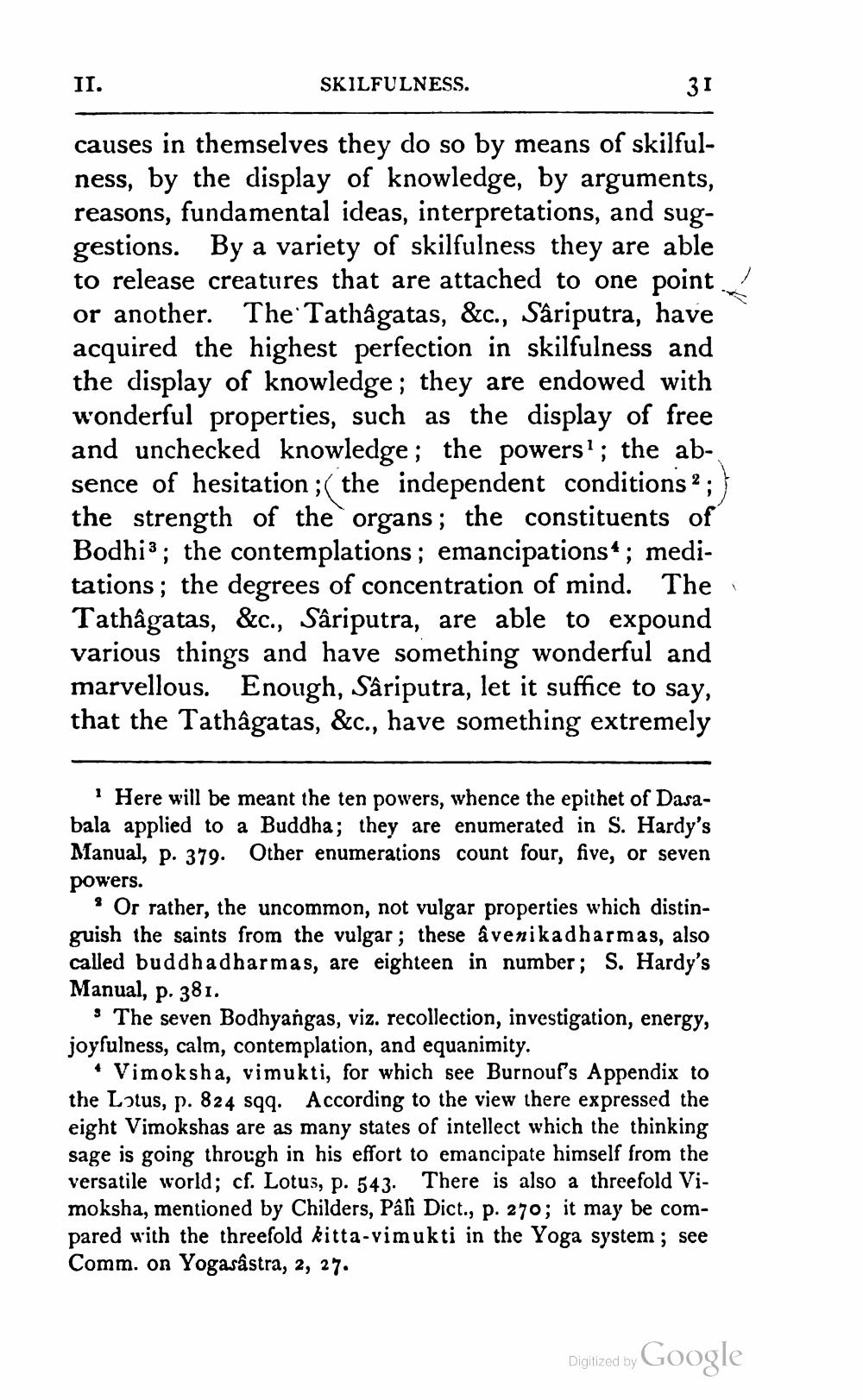________________
II.
SKILFULNESS.
causes in themselves they do so by means of skilfulness, by the display of knowledge, by arguments, reasons, fundamental ideas, interpretations, and suggestions. By a variety of skilfulness they are able to release creatures that are attached to one point or another. The Tathagatas, &c., Sâriputra, have acquired the highest perfection in skilfulness and the display of knowledge; they are endowed with wonderful properties, such as the display of free and unchecked knowledge; the powers?; the ab-, sence of hesitation ;( the independent conditions ; the strength of the organs; the constituents of Bodhi3; the contemplations; emancipations* ; meditations; the degrees of concentration of mind. The Tathagatas, &c., Sâriputra, are able to expound various things and have something wonderful and marvellous. Enough, Sâriputra, let it suffice to say, that the Tathagatas, &c., have something extremely
Here will be meant the ten powers, whence the epithet of Dasabala applied to a Buddha; they are enumerated in S. Hardy's Manual, p. 379. Other enumerations count four, five, or seven powers.
s Or rather, the uncommon, not vulgar properties which distinguish the saints from the vulgar; these âvenikadharmas, also called buddhadharmas, are eighteen in number; S. Hardy's Manual, p. 381.
The seven Bodhyangas, viz. recollection, investigation, energy, joyfulness, calm, contemplation, and equanimity.
Vimoksha, vimukti, for which see Burnouf's Appendix to the Lotus, p. 824 sqq. According to the view there expressed the eight Vimokshas are as many states of intellect which the thinking sage is going through in his effort to emancipate himself from the versatile world; cf. Lotus, p. 543. There is also a threefold Vimoksha, mentioned by Childers, Pâli Dict., p. 270; it may be compared with the threefold kitta-vimukti in the Yoga system ; see Comm. on Yogasastra, 2, 27.
Digitized by Google




